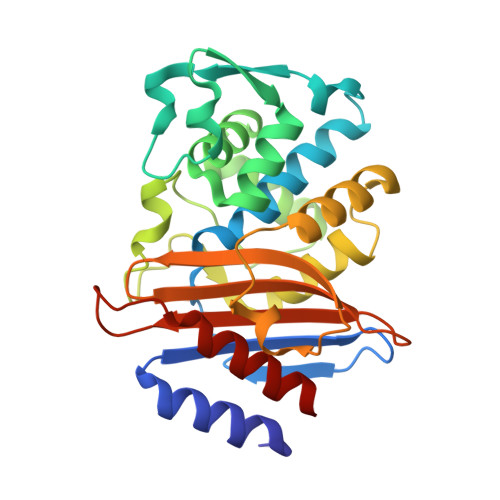Mapping the determinants of catalysis and substrate specificity of the antibiotic resistance enzyme CTX-M beta-lactamase.
Judge, A., Hu, L., Sankaran, B., Van Riper, J., Venkataram Prasad, B.V., Palzkill, T.(2023) Commun Biol 6: 35-35
- PubMed: 36635385
- DOI: https://doi.org/10.1038/s42003-023-04422-z
- Primary Citation of Related Structures:
7UON - PubMed Abstract:
CTX-M ¦Â-lactamases are prevalent antibiotic resistance enzymes and are notable for their ability to rapidly hydrolyze the extended-spectrum cephalosporin, cefotaxime. We hypothesized that the active site sequence requirements of CTX-M-mediated hydrolysis differ between classes of ¦Â-lactam antibiotics. Accordingly, we use codon randomization, antibiotic selection, and deep sequencing to determine the CTX-M active-site residues required for hydrolysis of cefotaxime and the penicillin, ampicillin. The study reveals positions required for hydrolysis of all ¦Â-lactams, as well as residues controlling substrate specificity. Further, CTX-M enzymes poorly hydrolyze the extended-spectrum cephalosporin, ceftazidime. We further show that the sequence requirements for ceftazidime hydrolysis follow those of cefotaxime, with the exception that key active-site omega loop residues are not required, and may be detrimental, for ceftazidime hydrolysis. These results provide insights into cephalosporin hydrolysis and demonstrate that changes to the active-site omega loop are likely required for the evolution of CTX-M-mediated ceftazidime resistance.
Organizational Affiliation:
Department of Biochemistry and Molecular Biology, Baylor College of Medicine, Houston, TX, USA.

















